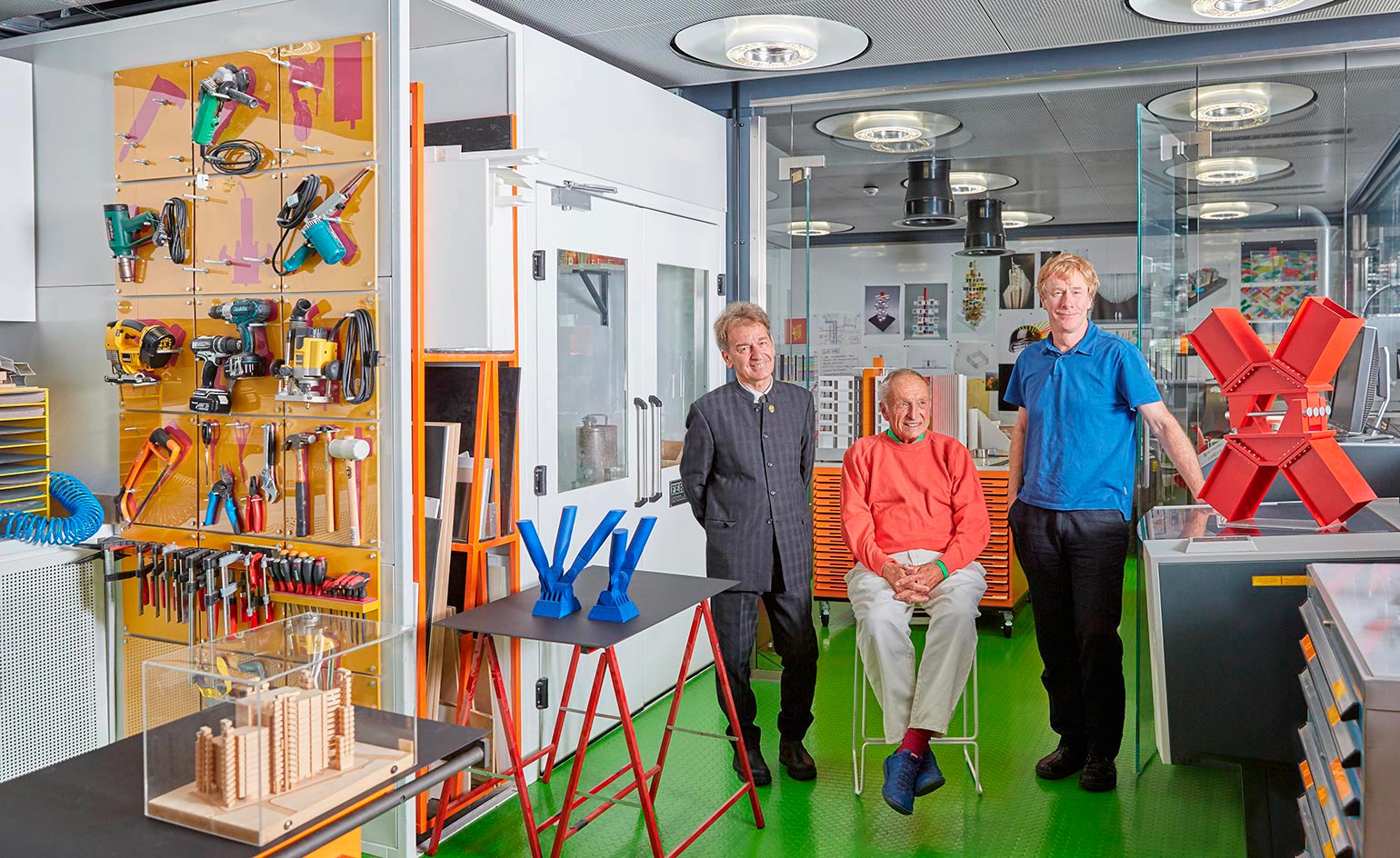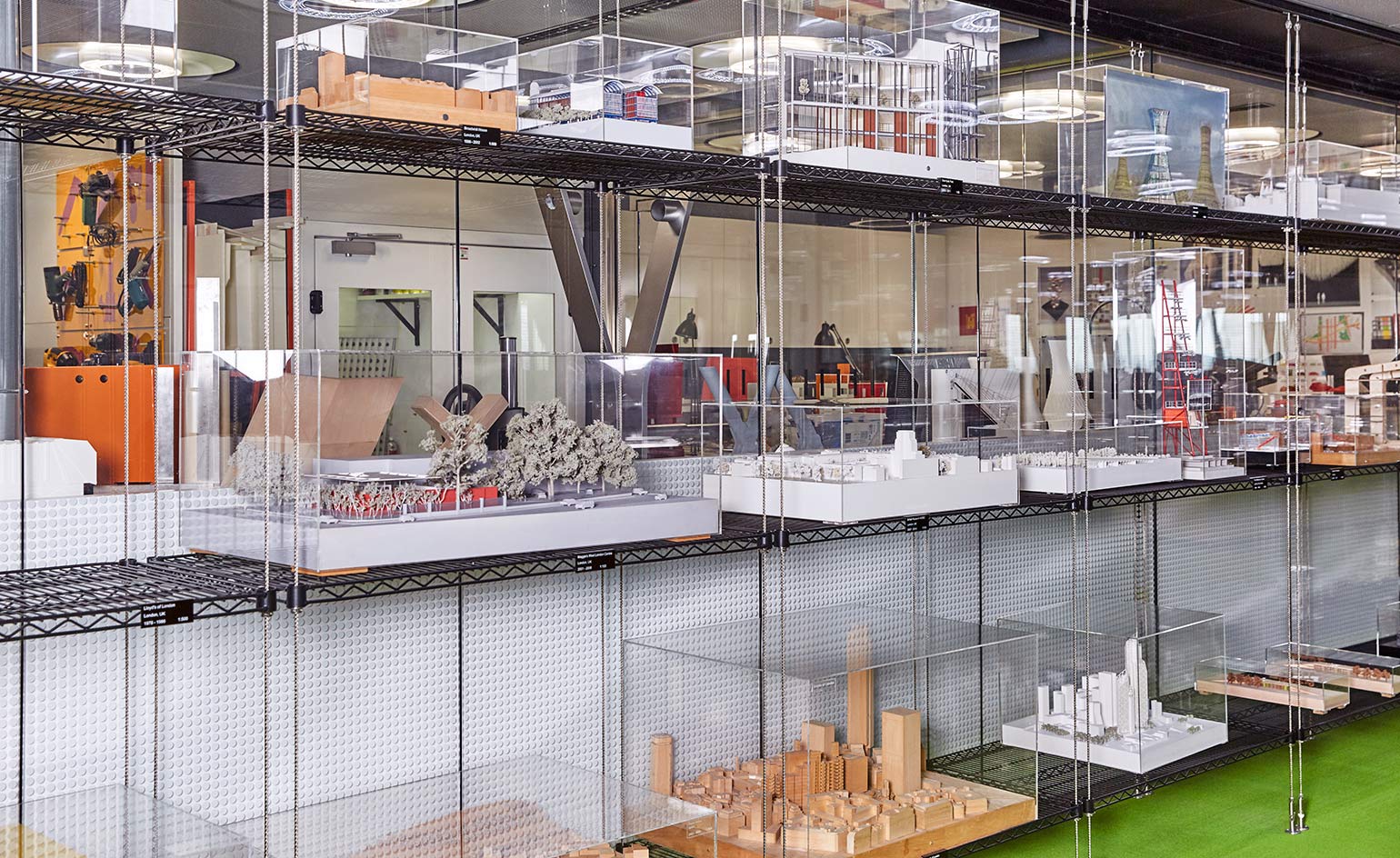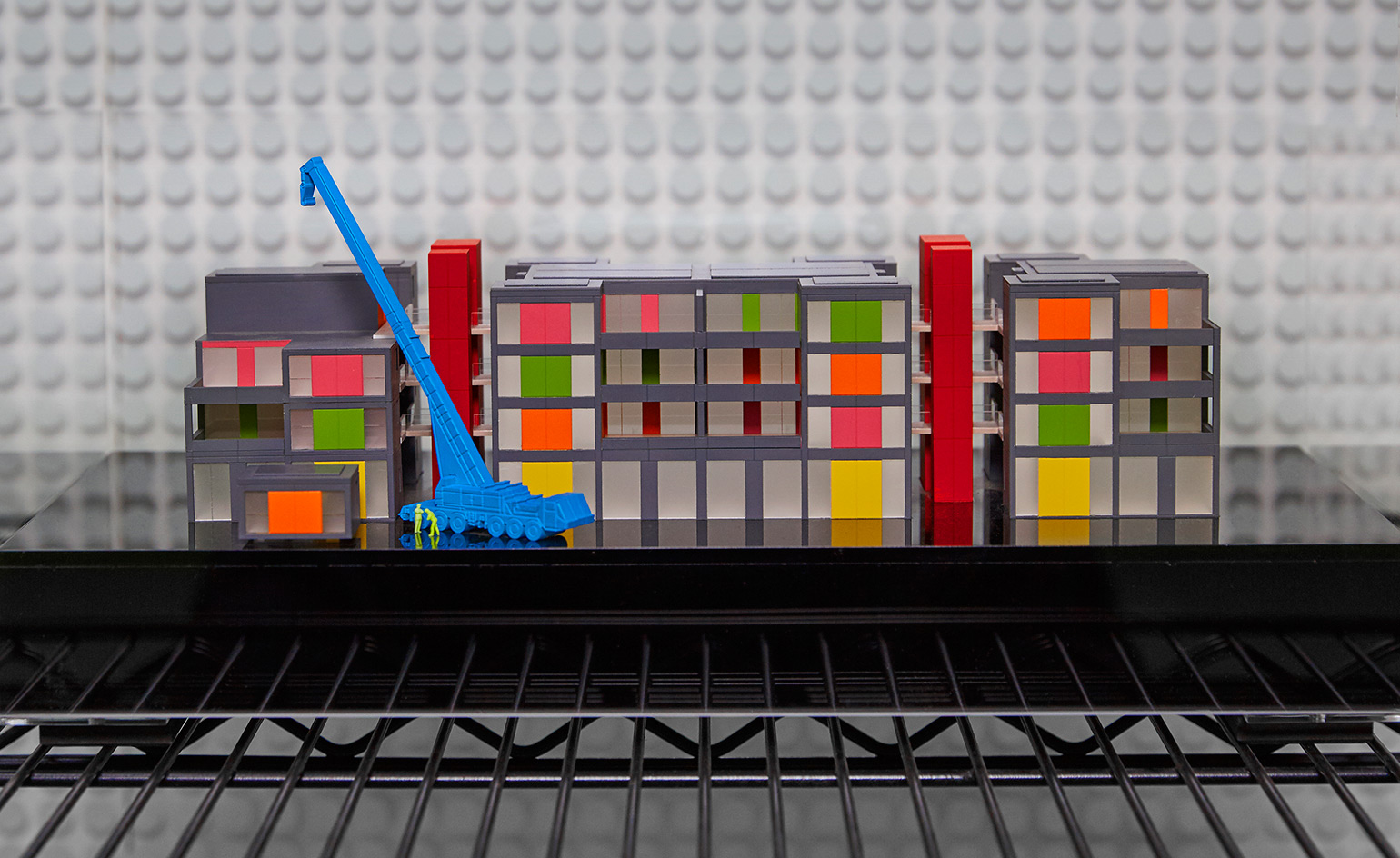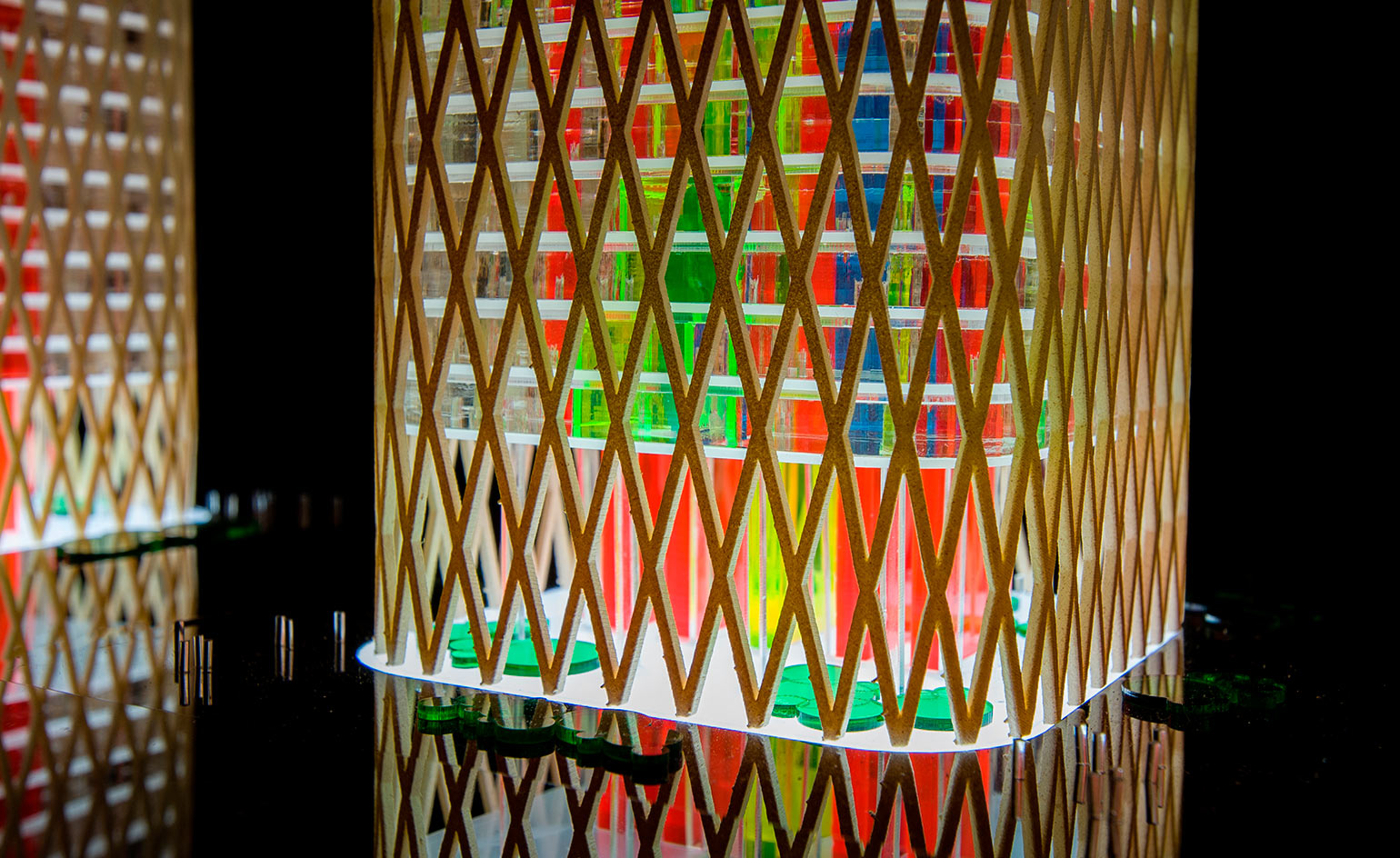Triple time: Rogers Stirk Harbour + Partners celebrates ten years together

The view gets in everywhere. Framed by the vibrant, putting-green flooring and arresting rows of red, orange and Yves Klein-blue seating, St Paul’s Cathedral stares straight back, approvingly, under typically leaden London skies. The still shockingly modern exoskeleton of the Lloyd’s building shimmers shyly next door behind grey Venetian blinds. We are on the 14th floor of 122 Leadenhall, commonly tagged the Cheesegrater and unarguably the most graceful of the brand name skyscrapers that now dominate the City of London.
These are the offices of, and powerful advertisement for, Rogers Stirk Harbour + Partners (RSHP), the architects responsible for both this and its neighbour. The two buildings were rendered about 25 years apart, but with equal skill and beauty, in the heart of an annually more anodyne district. Nearly half of the buildings in this square mile of central London have been rebuilt in the last half- century. But, ever since the success of structures such as Lloyd’s first persuaded planners to raise permitted building heights, most of the surrounding offices are not graceful or delicate like Lloyd’s and Leadenhall, but hard, overbearing, inhuman even.
In the City and financial centres like it around the world, the same ideas seem to have migrated from architect to architect and from building to building, fluently, promiscuously. In all of this, RSHP has remained apart, doing its own thing and, astonishingly for so successful a practice, even flying a little under the radar – a 200-strong firm at a time when the biggest architectural practices employ 2,000.

Rogers Stirk Harbour + Partners’ limited-edition cover, picturing models of the practice’s latest projects, is available to subscribers
‘We spend most of our time trying to make big things look small,’ says Graham Stirk, one of the practice’s founding partners, wryly. ‘I think, in fact, it’s actually one of the biggest problems facing architects today, how you scale buildings up – which is what the market increasingly requires – without losing the human element. One thing I’d say about our firm is that we have one big advantage. We haven’t started out designing house extensions and worked our way up to bigger projects. I started here on big projects. My first job was on Lloyd’s 30 years ago. The fact is that the sensibility of doing bigger things is different. I’m not saying it’s harder, but it’s a completely different skill set that is required to give them a humanity of scale.’ It is now precisely a decade since the names of Ivan Harbour and Graham Stirk were added to that of Richard Rogers in the company title, and the likes of Andrew Morris and Lennart Grut were created senior partners and Ian Birtles, partner, but they had all been working together long before that.'
‘What changed when our names were added?’ muses Harbour. ‘The short answer is, not much. Except you start to feel personally responsible for the wellbeing of the office. Even today, if you ask what my hopes are for the next ten years, I’d say to still be here and still be solvent, and hopefully still have the chance to influence the conversation about urban density and vitality. But I’d settle for still being here, still clinging to the rock face.’ ‘The idea of creating the new partnership was really all about continuity,’ explains Rogers. ‘The only example I could think of where the names and the structure of the practice stay the same over time was Saarinen Swansen, and even then he was passing to his son. Mostly, for a practice like Skidmore, Owings & Merrill, say, the founders go and the structure evolves into something else. Not good or bad, but different.
I didn’t want that. I wanted work at the same level of intensity and vision, so I asked the two most talented designers to join the masthead and added the directors.’ RSHP has always had a written constitution to help ensure this commitment to a similar vision is shared out equally. Famously, partner pay is capped at a fixed multiple of the lowest paid architect. And everywhere there is a feeling that intellectual interrogation is not some necessary evil, but the lifeblood of the place. Some architects find that their style slips into syntax as the years pass and the awards pile up. That their youthful flourishes assume the weight of an intractable world view, a weight for which they are not always prepared. These are not those sort of architects.

Models displayed at the RSHP offices in London
This flexibility can be seen in the fact that what was once a one-man practice that handled one project at a time, now has more than 40 projects on the go. These range from new airport terminals in Geneva, Taoyuan and Lyon, to a whisky distillery for The Macallan in Speyside in Scotland, and museum projects in Monaco and Lens. As expected there is much to admire. But there is so much more variety than one might imagine. Astonishingly, the British Museum extension, completed in 2014, was the practice’s first cultural assignment since the Pompidou Centre, completed in 1977. It will soon be joined by a new collections facility at the Louvre Lens.
Looking at the list of projects, the large scale and the impossibly large scale exist in a comfortable equilibrium. Ivan Harbour has been working on the largest: Sydney’s Barangaroo masterplan – think Canary Wharf, done by designers with soul – for as long as his name has been on the door. He headed up a team of 30 local architects, with six imported from the offices in London. It is, depending on how you measure these things, the largest infrastructure project in the world. The practice’s direct involvement is drawing to a close now, but there are still three buildings by Renzo Piano and one by Wilkinson Eyre to be delivered as part of Harbour’s plan. The project mirrors, in many ways, the resilience of the practice as a whole.
‘It turns out that 2007 wasn’t a great year to start a firm of architects specialising in large-scale infrastructure projects,’ laughs Stirk. ‘In fact, financial crises seem to time nicely with our ten years of existence.’ ‘Barangaroo only happened,’ continues Harbour, ‘because after six months Australia realised they didn’t have a recession. They thought they would get one like everyone else, but because of their banking regulations they didn’t. And then the Australian dollar shot up and not only was the project still on, it actually meant we could afford to do it.’

RSHP’s recent Place/Ladywell project is a partnership with Lewisham Council to create a temporary residential development and forms part of an ongoing research project on off-site manufactured housing
There is a tradition of architects adapting and improvising their way towards beauty in unpromising sites, as Herzog & de Meuron did with their railway signal box in Basel, or Calatrava with his textile warehouse in obscure Coesfeld, but this has become an RSHP trope. Neo Bankside, the upmarket, now five- tower residential scheme on London’s Southbank was envisaged as a single monolithic building by successive developers and planning chiefs, a dreary block on a dreary site. RSHP delivered air, space and transparency (a bit too much transparency for some residents facing Tate Modern’s new viewing platform).
Few buildings, though, travelled as far from their origins as the Geneva airport plan. ‘The airport is basically underground, underneath the runway,’ says Stirk, ‘and the plan called for what was essentially a 750m tunnel. You could have brightened it up a bit with a few light wells, but it would have been impossible to create an environment there to make travelling more pleasant.’ How the practice managed to do just that – creating a terminal with lakeside and mountain views – is a story that has been repeated in some form or other over the past decade.
In their best work, there is evidence of the relentless interrogation of solutions, tested in turn by the vagaries of budget or site or brief, or all three. The characteristic movement, as here at Leadenhall, is one towards purity and the beauty of simplicity.
‘Architects love to talk about simplicity and that is a virtue,’ agrees Stirk, ‘but simple and simplistic are two different things. Eighty six per cent of this building was made elsewhere and just assembled here. We had 250 people on site. When we did One Hyde Park in 2011, we had 2,000. Next door [the Lloyd’s building] had twice the budget and half the floor area, but that, if anything, is what we have learned in the last ten years. However you resolve architectural problems, you have to do more with less. And you absolutely can.’
As originally featured in the November 2017 issue of Wallpaper* (W*224) – out on 12 October

The gently undulating roof of the Macallan Distillery, which is to open next summer in Speyside, Scotland

An exclusive shot of a development model designed in collaboration with Cambridge University and Atelier Two, currently in the works.

The practice’s current projects include a new terminal for Lyon airport, which will nearly double in size

Another current project, a cantilevered gallery space for French winery Château La Coste
INFORMATION
For more information, visit the Rogers Stirk Harbour + Partners website
Receive our daily digest of inspiration, escapism and design stories from around the world direct to your inbox.
Former Wallpaper* staffer Richard Cook served as Editorial Director from 1999 to 2017.
-
 New tech dedicated to home health, personal wellness and mapping your metrics
New tech dedicated to home health, personal wellness and mapping your metricsWe round up the latest offerings in the smart health scene, from trackers for every conceivable metric from sugar to sleep, through to therapeutic furniture and ultra intelligent toothbrushes
-
 Out of office: The Wallpaper* editors’ picks of the week
Out of office: The Wallpaper* editors’ picks of the week'Tis the season for eating and drinking, and the Wallpaper* team embraced it wholeheartedly this week. Elsewhere: the best spot in Milan for clothing repairs and outdoor swimming in December
-
 How Stephen Burks Man Made is bringing the story of a centuries-old African textile to an entirely new audience
How Stephen Burks Man Made is bringing the story of a centuries-old African textile to an entirely new audienceAfter researching the time-honoured craft of Kuba cloth, designers Stephen Burks and Malika Leiper have teamed up with Italian company Alpi on a dynamic new product
-
 Arbour House is a north London home that lies low but punches high
Arbour House is a north London home that lies low but punches highArbour House by Andrei Saltykov is a low-lying Crouch End home with a striking roof structure that sets it apart
-
 A former agricultural building is transformed into a minimal rural home by Bindloss Dawes
A former agricultural building is transformed into a minimal rural home by Bindloss DawesZero-carbon design meets adaptive re-use in the Tractor Shed, a stripped-back house in a country village by Somerset architects Bindloss Dawes
-
 RIBA House of the Year 2025 is a ‘rare mixture of sensitivity and boldness’
RIBA House of the Year 2025 is a ‘rare mixture of sensitivity and boldness’Topping the list of seven shortlisted homes, Izat Arundell’s Hebridean self-build – named Caochan na Creige – is announced as the RIBA House of the Year 2025
-
 In addition to brutalist buildings, Alison Smithson designed some of the most creative Christmas cards we've seen
In addition to brutalist buildings, Alison Smithson designed some of the most creative Christmas cards we've seenThe architect’s collection of season’s greetings is on show at the Roca London Gallery, just in time for the holidays
-
 In South Wales, a remote coastal farmhouse flaunts its modern revamp, primed for hosting
In South Wales, a remote coastal farmhouse flaunts its modern revamp, primed for hostingA farmhouse perched on the Gower Peninsula, Delfyd Farm reveals its ground-floor refresh by architecture studio Rural Office, which created a cosy home with breathtaking views
-
 A revived public space in Aberdeen is named Scotland’s building of the year
A revived public space in Aberdeen is named Scotland’s building of the yearAberdeen's Union Terrace Gardens by Stallan-Brand Architecture + Design and LDA Design wins the 2025 Andrew Doolan Best Building in Scotland Award
-
 The Architecture Edit: Wallpaper’s houses of the month
The Architecture Edit: Wallpaper’s houses of the monthFrom wineries-turned-music studios to fire-resistant holiday homes, these are the properties that have most impressed the Wallpaper* editors this month
-
 A refreshed 1950s apartment in East London allows for moments of discovery
A refreshed 1950s apartment in East London allows for moments of discoveryWith this 1950s apartment redesign, London-based architects Studio Naama wanted to create a residence which reflects the fun and individual nature of the clients